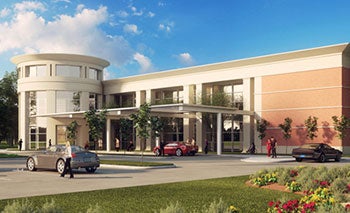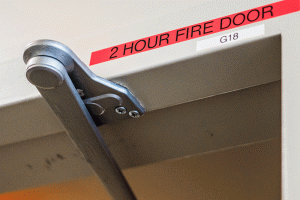Mobile first, patient first
With today’s patient experiences linked more closely to mobility than ever before, an effective mobile strategy is now a critical part of any health care organization’s success. What tools and devices can providers use to improve the quality of care? How will patients find their way around a facility? How can care efficiency be increased while reducing costs? The answers begin with deploying a wireless infrastructure that supports current and future care innovations.
With Wi-Fi infrastructure that may be more than a few years old, many health care organizations are struggling to keep up with increasing mobile connectivity expectations. With the Internet of Things (IoT) quickly changing workplaces across every industry, including health care, organizations are seeing more opportunities to improve patient care and boost customer service, while simultaneously achieving operational efficiencies.
Here’s how three organizations are tackling these challenges and embracing opportunities right now.
Case 1: Boston Medical Center

Boston Medical Center
During its clinical campus redesign, Boston Medical Center (BMC) installed a robust, modern wireless local area network (WLAN) infrastructure to improve health care delivery throughout the 496-bed academic hospital’s 30 existing buildings, including three facilities it was renovating and expanding.
“Having highly reliable, secure and pervasive coverage was key,” says Craig Reise, manager of infrastructure engineering for the hospital.
Adopting Gigabit Wi-Fi. BMC began upgrading its network by installing access points (APs) that support the latest IEEE standard, 802.11ac, also known as Gigabit Wi-Fi, for providing wirelike experiences.
To eliminate dead zones in even the most challenging areas, such as lead-lined walls of the radiology room, BMC installed approximately 800 indoor and outdoor APs along with the latest generation of mobility controllers — where the Wi-Fi operating system, firewall and related applications reside.
BMC also leveraged a sophisticated mapping tool, supplied by its Wi-Fi technology partner, to determine the most advantageous locations for each AP. “Proper WLAN design and testing was critical to meeting our pervasive Wi-Fi goals,” Reise says.
“For example, we recently moved our NICU to a new floor enabled with Gigabit Wi-Fi,” Reise continued. “Our new [Hewlett Packard Enterprise] HPE Aruba infrastructure is supporting workstations on wheels, various wireless medical devices, an iPad-enabled language interpreter service, our Stanley Healthcare infant protection system and a new nurse call system using Ascom’s Myco phones for Voice-over-Wireless and direct alarms from instruments attached to the babies.”
Enterprise tools automate management. BMC also invested in enterprise management software that enables BMC’s lean information technology (IT) staff to visualize every AP, as well as every device connected to each AP, from a centralized dashboard to monitor device behavior, troubleshoot application issues proactively and plan for capacity to meet new needs. Additionally, it can be used as a predictive tool to simulate situations, such as a flurry of devices connecting at shift changes.
To connect the myriad wireless devices on its campus, BMC is deploying the ClearPass Policy Manager from Aruba for secure network access. It will allow clinician and staff self-service onboarding and automatically puts different types of devices into different security roles.
For example, infusion pumps are only allowed to communicate with their own management servers. Sensors for an IoT infant-protection system receive an appropriate set of credentials. And providers signing into a cart-based wireless laptop can access BMC’s EPIC system.
In addition to seamlessly connecting approximately 3,000 devices to the Wi-Fi network daily, the smart policy management platform will also segment the WLAN to create a separate guest network, replacing the manual configuration currently utilized to keep patient and visitor connectivity completely segregated from institutional traffic.
Adding a navigational app. Today, BMC’s Wi-Fi supports multiple patient care-related applications for emergency, operating room and CPOE (computerized provider order entry) systems. Operationally, it powers a Vocera Communications Badge solution, a pneumatic tube control system, temperature sensors, security-related devices, locator tagging for high-value assets and a valet management system.
Reise notes that BMC plans to explore a branded app to assist patients, staff and visitors with wayfinding around its campus. The app will allow users to access a campus map and real-time locating data for quickly finding facilities and departments spread over several city blocks.
“With our new, secure WLAN in place, our IT staff can concentrate on projects that help BMC deliver exceptional patient care,” he says. “And, we can do it while also reducing our overhead costs.”
Case 2: Torrance (Calif.) Memorial Medical Center

Torrance Memorial Medical Center
Los Angeles County-based Torrance Memorial Medical Center’s transition to 802.11ac on campus also includes innovative technology for extending Gigabit Wi-Fi to off-campus locations.
“A modern WLAN is mission-critical to our organization as we have grown to become a multifaceted health system,” says Steve Lantz, director of IT infrastructure and operations for the 446-bed nonprofit medical center. “The demand for wireless is increasing not only on our main campus, but across our expanding network of physicians.”
Zero-touch mobilizes remote sites. After replacing its aging wireless gear with approximately 750 new APs, Torrance Memorial also began outfitting remote physician offices with Instant APs from Aruba. Also called “controllerless,” these units are zero-touch and self-provisioning, meaning a single, master AP communicates configurations to all similar APs.
What’s more, Instant APs are plug-and-play, enabling nontechnical individuals to easily install them. This simplifies deployment and administration at remote sites, while providing the same reliability, security and performance as traditional, controller-managed APs.
In addition, a robust controllerless solution can automatically transfer critical controls from one Instant AP to another, ensuring no connectivity disruptions in the event of an AP failure — all without any human intervention.
New initiatives enabled. For security across all APs on its network, Torrance Memorial is also utilizing a smart policy management platform to separate guest and internal traffic. This supports the institution’s hybrid device strategy, enabling Torrance Memorial to permit staff-owned, “bring your own device” gear, as well as corporate-issued tablets, laptops and wireless-enabled medical equipment, onto the network.
“Having policy management software that automatically detects the type of device seeking connectivity and then providing it with the appropriate credentials, allows us to deliver services securely,” Lantz says. “Delivering access for staff, patients and guests while maintaining tight security is challenging, but our infrastructure provides a solid platform.”
Torrance Memorial also appreciates its network management platform for ensuring the stability and reliability required to support skyrocketing device counts. In addition to institution-issued tablets, this includes wireless-enabled medical devices such as infusion pumps, Dolphin handheld barcode scanners, virtual desktop infrastructure-enabled mobile PC carts and mobile EKGs.
Continuous innovation. Moving forward, Torrance Memorial continues to plan for innovations that depend on modern Wi-Fi, such as expanding its Intouch Health virtual care program.
The organization will leverage its WLAN as a platform for mobile communications via smartphone. “This solution will provide voice, secure text messaging, access to patient information and other applications to help provide better, more efficient patient care,” Lantz says.
Torrance Memorial also will be considering IoT connectivity as solutions mature.
“Our organization prides itself on having the expertise and technology to deliver the best medical care possible,” Lantz says. “With our new Aruba Wi-Fi infrastructure in place, we have the foundation to do so.”
Case 3: Kelsey-Seybold Clinic, Houston

Kelsey-Seybold Clinic
Like BMC and Torrance Memorial, Houston’s Kelsey-Seybold Clinic recently adopted an 802.11ac WLAN to enable its 420 health care providers to continue the organization’s 75-year tradition of excellence while simultaneously reducing operational costs.
“As a leading U.S. physician-owned practice and the nation’s first NCQA [National Committee for Quality Assurance]-accredited accountable care organization, we depend on our Wi-Fi to be responsive and stable,” says Martin Littmann, chief technology officer and chief information security officer for the institution.
Improved security posture and more. Since it is a distributed organization, Kelsey-Seybold has deployed its WLAN throughout 20 locations spread across 10,000 square miles. To secure and manage this vast network, Kelsey-Seybold leverages the Aruba ClearPass Policy Manager platform for clinic-owned mobile devices, wireless medical hardware and employee-owned, bring-your-own-technology (BYOT) devices, as well as patient and visitor mobile connectivity.
This platform enables Kelsey-Seybold to divide the organization’s Wi-Fi into internal and external networks, plus limit guest network bandwidth based on internal traffic loads. In addition, the security tool automatically and continuously moves BYOT devices from the guest network to the internal network, improving Kelsey-Seybold’s security posture and reducing administrative costs.
“Our policy manager even enables us to quickly track down employee devices that may be infected with malware,” Littmann says. “None of that was possible before.”
According to Littmann, a network management platform is equally critical. “It’s a tremendous asset for keeping an eye on our Wi-Fi environment.” Littmann says. “We rely very heavily on its data collection and reporting capabilities to help us fine-tune the performance of our WLAN.”
Real-time wayfinding on tap. At Kelsey-Seybold, the patient care benefits of a modern WLAN are palpable. This includes supporting Wi-Fi-enabled features available in the organization’s Epic electronic health records system.
Littmann hopes to further enhance patient mobile experiences at Kelsey-Seybold by evaluating location-enabled technology for real-time wayfinding via a mobile app. “For instance,” explains Littmann, “when a patient walks into our facility, he could receive a message that says ‘Welcome, Mr. Smith, your 2:30 p.m. appointment with Dr. Miller is in Area A on our third floor. Also, if you need a prescription, our first-floor pharmacy is offering a discount today.’”
Kelsey-Seybold’s WLAN now manages double the number of device connections it handled a year ago. And, with more people adopting IoT devices, such as personal fitness trackers, connectivity demands are only expected to rise.
“We’re proud of our history of service and innovation,” Littmann says. “We look forward to continuing to explore how Wi-Fi technologies can provide exciting new options to improve health care. With our new WLAN, we’re ready.”
As health care organizations continue looking for ways to control costs while improving patient experiences, reliable wireless infrastructure and mobile strategy are fundamental to supplying innovative, high-quality patient care in an environment where efficiency matters and seconds count.
Rick Reid, health care solutions product marketing manager, Aruba, a Hewlett Packard Enterprise Co.




